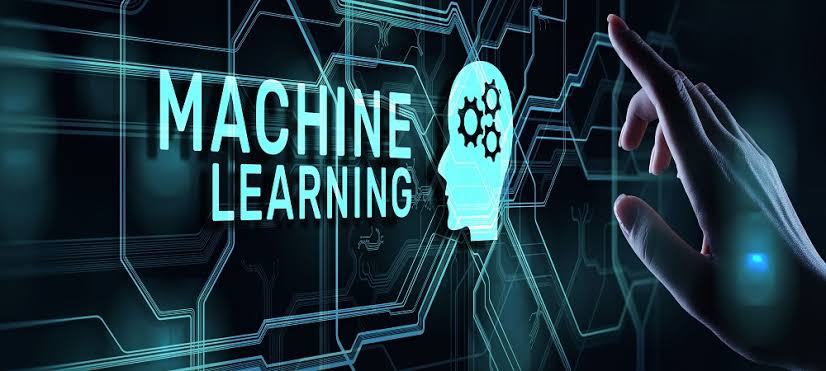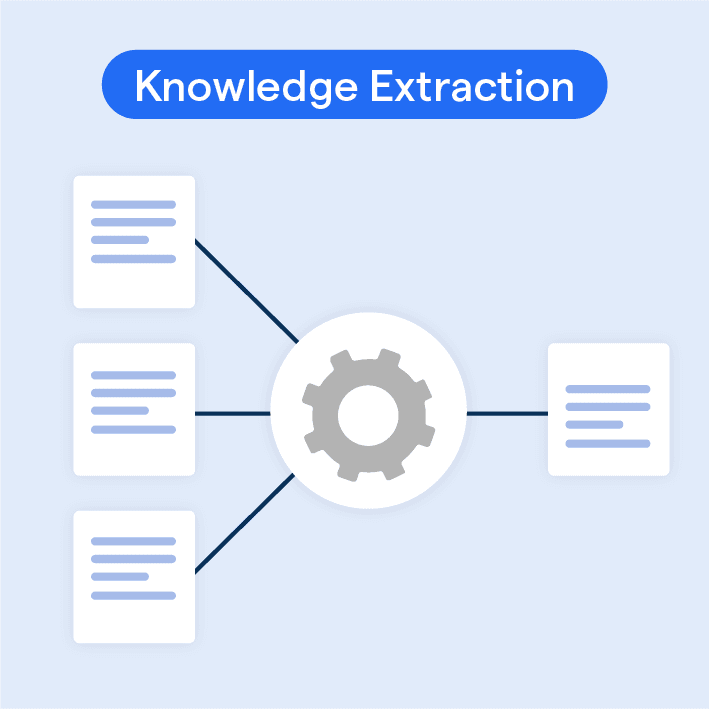What is Knowledge Extraction?
Knowledge extraction refers to the process of extracting relevant and meaningful information from unstructured or structured data sources. It involves identifying patterns, relationships, and insights from data and transforming them into actionable knowledge. The aim of knowledge extraction is to capture and utilize the valuable knowledge hidden within data to improve decision-making, efficiency, and productivity.
Why is Knowledge Extraction Important?
Knowledge extraction plays a crucial role in the field of artificial intelligence (AI) by enabling machines to understand and comprehend data like humans. It helps in extracting valuable insights, discovering hidden patterns, and making sense of large volumes of data. This information can then be utilized in various industries such as healthcare, finance, manufacturing, and more to drive innovation, improve processes, and gain a competitive edge.
How Knowledge Extraction Works?
Knowledge extraction follows a series of steps to extract and transform data into meaningful knowledge. These steps typically include data preprocessing, feature selection, data mining, and knowledge representation. Various techniques are used in knowledge extraction, including symbolic approach and connectionist approach, each with its own advantages and disadvantages.
Techniques used in Knowledge Extraction
In this section, we will delve into the world of key techniques used in knowledge extraction and how they function.
Named Entity Recognition
Named Entity Recognition (NER) is all about identifying and classifying elements in text into predefined categories like names, places, dates, etc. Here, the key is being able to distinguish specific pieces of data in a sea of text.
Text Mining
Think of digging deep into a mine, except that the mine is a text. Text mining is the exploration of large amounts of unstructured text data. The aim is to discover patterns, trends and extract helpful knowledge from the text-based data.
Natural Language Processing
In simple terms, Natural Language Processing (NLP) allows computers to understand, interpret, and manipulate human language. The major goal? Enhancing computer-user communication and retrieving information from raw data in a more intelligent, human-like manner.
Information Retrieval
Like its name suggests, Information Retrieval (IR) is about finding the information you need from a large pool. IR systems help retrieve information from a database or even the internet that is relevant to the user's query.
Machine Learning Algorithms

Machine learning algorithms are built to make predictions or decisions without being explicitly programmed to do so. They learn from data inputs and become better over time, finding uses in various knowledge extraction scenarios.
Data Extraction Tools
Besides techniques, there are numerous data extraction tools like IBM Watson, Google Cloud Natural Language, and Stanford CoreNLP that assist in the process. By contrasting and comparing these tools, we can select the most suitable one for specific tasks.
In conclusion, there's a whole toolbox of techniques ready to be used in knowledge extraction, each with its own unique functionality. By combining them in strategic ways, we can acquire valuable insights and enhance our understanding.
Types of Data Sources used in Knowledge Extraction
Data sources play a crucial role in knowledge extraction. They can be classified into structured and unstructured data sources.
Structured Data Sources used in Knowledge Extraction
In this section, we'll delve into understanding the significant part structured data sources play in knowledge extraction.
Use of Relational Databases
Relational databases form the backbone of structured data. They store data in predefined formats or 'tables,' making it readily accessible for extraction and analysis.
Engagement with Spreadsheet Data
Spreadsheets are commonly used in organizations to maintain records. They store data in rows and columns, facilitating easy extraction and analysis of data based on various filters and conditions.
Exploitation of Application Data
Data generated from applications—be it mobile or desktop-based—are usually structured in nature. It often includes user demographics, usage statistics, feature utilization, and other metrics that can be easily extracted and analyzed.
Understanding Research Data
Many organizations use structured research data, such as surveys and questionnaires, to gain insights. Such data, due to its structured form, can readily be analyzed to reveal patterns, trends, and insights.
Utilization of Sensor Data
In industries like manufacturing or logistics, sensor data generates crucial structured information. Variables such as temperature, pressure, location, etc., provide actionable insights upon extraction and analysis.
Leveraging Open Government Data
Governments often release various structured datasets related to demographics, economics, health, environment, and more. This data is a rich source of reliable information useful for informed decision-making.
Unstructured Data Sources used in Knowledge Extraction
Emails are a rich data source that often provides a wealth of untapped knowledge. By leveraging natural language processing techniques, valuable insights can be extracted from this unstructured data.
Social Media Platforms

Being an abundant source of user opinions, thoughts, and behavior, social media platforms are a goldmine for knowledge extraction. Sentiment analysis powered by AI can dissect this data to recognize patterns and trends.
Customer Reviews and Feedback
Customer reviews and feedback, whether found on websites or social media, are a valuable unstructured data source. Analyzing this information provides better views of customer satisfaction and their perspective on products or services.
Transcribed Voicemails and Voice Recordings
Voicemails and other voice recordings, when transcribed, comprise a rich source of unstructured data. Advances in voice recognition technology make this source an increasingly viable option for knowledge extraction.
Website Clickstream Data
Clickstream data tracks the user's navigation through a website. While unstructured, it holds valuable insights about user behavior and preferences, which can guide decisions about site design and tailored offerings.
Video and Image Analysis
With the advent of powerful AI tools, the analysis of video and image content has become possible. These data sources, difficult to handle historically due to their complexity, can now be parsed to extract meaningful information.
How to Perform Triplet Extraction?
Triplet extraction is a fundamental step in extracting knowledge from text in NLP. It is used to discover relationships between entities in a sentence, extracting a triple of data consisting of a subject, predicate, and object.
Importance of Text Preprocessing
To start with, it is key to preprocess your text. This may include steps such as tokenization, lemmatization, and part-of-speech tagging. Preprocessing helps make the text analyzable, making it integral to the process of triplet extraction.
Utilizing Dependency Parsing
Once preprocessing is complete, you can use dependency parsing. It is a type of syntactic analysis that helps find out how different words in a sentence relate to each other. It's a crux point in triplet extraction, as it paves the way to finding our needed subject, predicate, and object.
Extracting Triples
Having identified and tagged the different parts of your sentences using techniques like dependency parsing, we can now extract the desired triples. Extracting the triplets means isolating and identifying the subject, predicate, and object from each sentence.
Implementing NLP Libraries
You don't have to do all of this manually. There are numerous NLP libraries available, like SpaCy or NLTK. These libraries come equipped with the required tools to facilitate triplet extraction and can be a great help in processing large volumes of text.
The Ubiquity of Triplet Extraction
In the end, remember that triplet extraction is a common method in NLP, used in digital assistants to chatbots, information retrieval systems to linguistic research. By applying it strategically, you can bring considerable depth and precision to your data analysis.
Benefits of Knowledge Extraction
Knowledge extraction offers numerous benefits to organizations and individuals alike:
Better Decision Making
By extracting valuable insights from data, knowledge extraction empowers decision-makers to make informed and data-driven decisions that can have a significant impact on their business outcomes.
Improved Efficiency
Knowledge extraction automates the process of extracting and interpreting data, enabling organizations to streamline operations and save time. This increased efficiency can lead to significant productivity gains.
Increased Productivity
By gaining access to relevant knowledge and insights from data, individuals and teams can work more effectively and efficiently, leading to increased productivity across various industries.
Challenges in Knowledge Extraction
While knowledge extraction provides immense value, it also comes with challenges that need to be addressed:
Ambiguity
Ambiguous data and linguistic references can make it difficult to accurately extract knowledge and identify meaningful relationships from the data source. This challenge can be overcome by utilizing techniques such as named entity recognition, part-of-speech tagging, and syntactic analysis.
Complexity
Data complexity, including noisy or incomplete data, can impact the accuracy and reliability of knowledge extraction algorithms. To address this challenge, various preprocessing techniques, such as data cleaning, normalization, and feature engineering, can be applied to improve the quality of the source data.
Data Integration
Integrating data from various sources and formats can be complex and time-consuming, requiring careful preprocessing, normalization, and merging. This challenge can be addressed through the use of data warehouses, data lakes, and data integration tools that enable efficient and streamlined data processing and analysis.
Legal and Ethical Implications
Knowledge extraction must adhere to legal and ethical guidelines to protect data privacy, copyrights, and intellectual property rights.
In conclusion, knowledge extraction is a vital process that helps us uncover hidden insights and transform raw data into valuable knowledge. By understanding the techniques, types of data sources, and challenges involved, individuals and organizations can leverage knowledge extraction to gain a competitive edge and drive innovation.
Frequently Asked Questions (FAQs)
Which techniques are commonly used for knowledge extraction?
There are several approaches, like named entity recognition, text mining, natural language processing, information retrieval, and machine learning algorithms.
What are some applications of knowledge extraction?
Knowledge extraction comes in handy for sentiment analysis, customer behavior analysis, market research, content curation, recommendation systems, and even knowledge graph creation.
What industries can benefit from knowledge extraction?
It has applications across diverse industries, like healthcare, finance, marketing, customer service, education, and government.
What is the difference between structured and unstructured data?
Structured data is neatly ordered, easily stored and processed in databases, spreadsheets, or tables. Unstructured data isn't as organized, appearing in varying sources, like text files, images, videos, social media, or sensor data.
What are some examples of knowledge extraction software?
Software solutions for knowledge extraction include IBM Watson, Google Cloud Natural Language, Amazon Comprehend, Stanford CoreNLP, Open NLP, and Apache Lucene.

